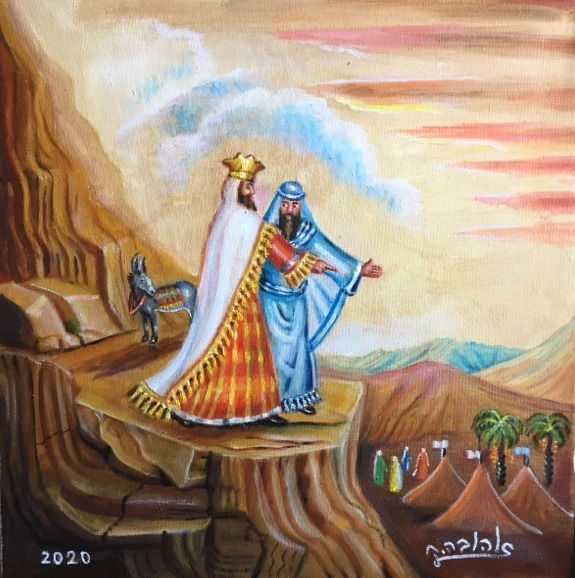Parshat Pinchas: Light from Darkness
- chabadtokyo
- Jul 20
- 3 min read
日本語訳が下に続きます。
Parshat Pinchas is read at the beginning of the period of Bein HaMetzarim (the "Days of Distress"). These days are days of mourning for the destruction of The Holy Temple that led to the long and terrible exile. However, ultimately, the suffering of exile is the bridge to the ultimate good in the true and complete Redemption.
The question then arises: Why did G-d do it this way, that the great revelation of good should grow specifically from a stage of descent and concealment in these three weeks? Couldn't the Holy One, Blessed be He, have granted the good directly, without a preceding phase of obscurity?
The explanation is that the perfection of good and light is when they emerge from evil and darkness. It is specifically when darkness turns into light and evil transforms into good – this is the greatest perfection that can be achieved. Light that comes from within darkness and good that comes from within evil are the most exalted forms of light and good.
When evil itself transforms into good, then the full power of good is revealed, to the extent that even evil itself becomes subservient to it. This is the inner reason for all the descents that precede ascents, and for the entire matter of exile and destruction. Since the Holy One, Blessed be He, desires that the people of Israel and all the nations of the world will reach perfection.
When the world is passing through the stage of descent and darkness, it is all for the perfection of good and light that will be revealed in the true Redemption. When the world experiences turmoil, adherence to the Noahide Laws becomes a crucial act of positive transformation. Upholding the universal 7 commandments will turn potential "evil" (manifested in lawlessness, immorality, idol worship, violence, and injustice) into good. The salvation is for the entire world, where the Divine light, resulted by righteous way of life, will shine in its perfect form.
Source: Sefer Hasichot 1989, Volume 2, Page 581.
Brought by Rabbi Moshe Bernstein

パラシャット・ピンハス:闇からの光
パラシャット・ピンハスは、ベイン・ハメツァリム(「苦難の日々」)の期間の初めに読まれます。この期間は、長く悲惨な(訳補:ユダヤ民族の)離散へと導いた聖なる(訳補:エルサレム)神殿の破壊を悼む日々です。しかし、究極的には、離散の苦しみこそが、真の完全な贖い出しにおける究極の善への架け橋となるのです。
そこで疑問が生じます。なぜネ’申は、この3週間という、降下と隠蔽の段階から、善の大いなる啓示が特に生じるようにされたのでしょうか。聖なるネ’申、祝福されるネ’申は、暗黒の段階を経ることなく、直接善を授けることはできなかったのでしょうか。
その説明は、善と光の完成は、それらが悪と闇から出現する時であるということです。闇が光に、悪が善に変容する時こそ、達成可能な最大の完成なのです。闇の中から生まれる光と、悪の中から生まれる善は、光と善の最も崇高な形です。
悪が善へと変容するとき、善の力は完全に発揮され、悪さえも善に従属するようになります。これが、上昇に先立つすべての下降、そして離散と破壊のすべてにおける内なる理由です。聖なる御方、祝福されし彼の方は、イスラエル民と世界のすべての民族が完成に到達することを望んでおられます。
世界が下降と闇の段階を通過しているとき、それはすべて、真の贖い出しにおいて明らかにされる善と光の完成のためです。世界が混乱を経験するとき、ノアの法に従うことは、前向きな変革のための決定的な行為となります。普遍的な七つの戒律を守ることは、潜在的な「悪」(無法、不道徳、偶像崇拝、暴力、不正として現れる)を善へと変えるのです。救済は全世界に及び、そこでは正しい生き方によってもたらされるネ’申の光が、その完全な形で輝くのです。
出典:Sefer Hasichot 1989, Volume 2, Page 581
ラビ・モシェ・バーンスタインによる
【※】本和訳は誠実に和訳しましたが、日本語を読むことができ、戒律を守る生活をしている敬虔なユダヤ人から承認を受けた訳ではありません。その点はご了承ください。
【※】英語で言うところのG-dを他の神から区別するために「ネ’申」と訳しました。また、英語で言うRedemptionを「贖い出し」と訳しています。



Комментарии